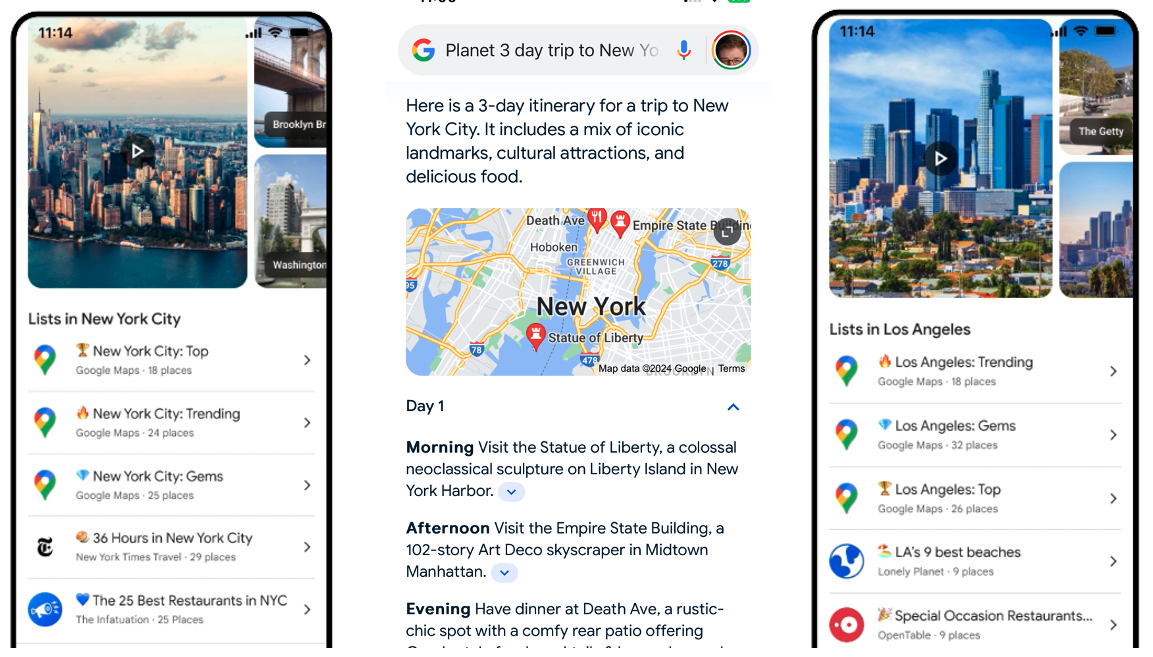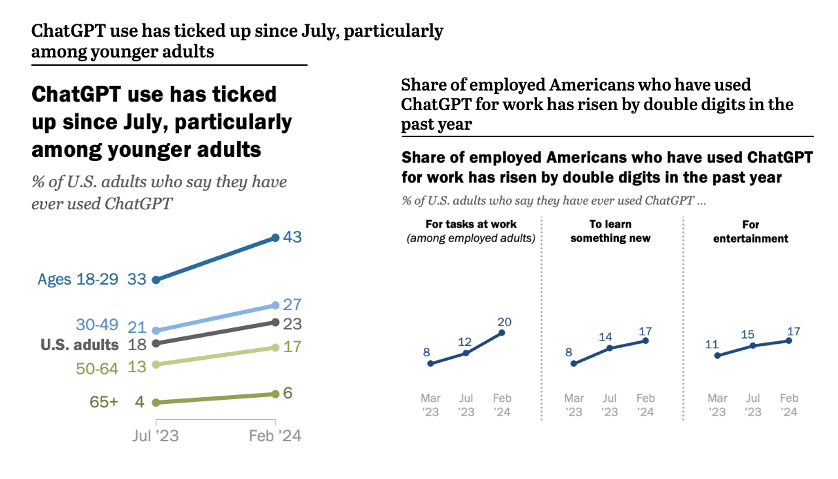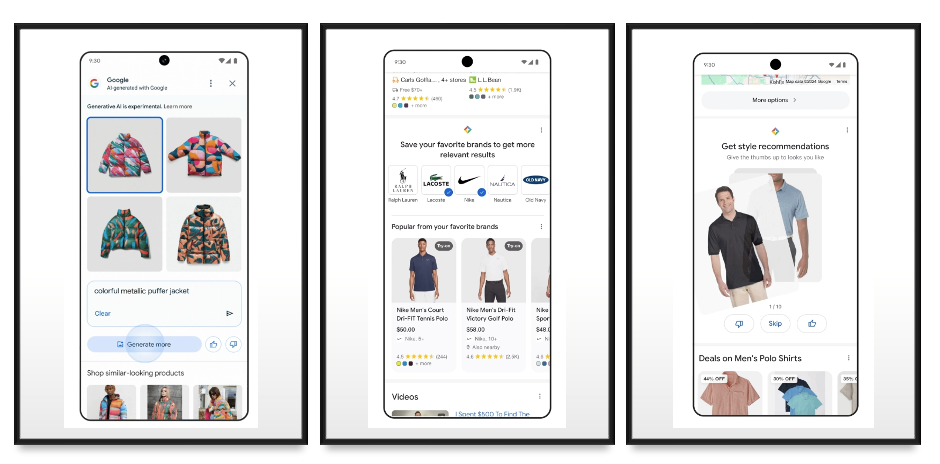AI Travel Itineraries, 23 for ChatGPT, Personalized Google

Maps & Search: Lists + Itineraries
Google is further expanding the social and planning features of Maps. The company is adding new lists and list-making tools. Rolling out in roughly 40 North American cities, Google Maps will soon show three types of lists. The "trending list" reflects short-term trending searches in a particular location (e.g., NYC). The "top list" is for places that have demonstrated enduring popularity. A third, "gems list," showcases less well-known but interesting or emerging places that don't show up on the other two. Google is also adding recommendations from OpenTable, The Infatuation, Lonely Planet and the New York Times. And Google is enhancing personal list-making on Maps, which now includes linking to content from social media sites. People who've made their own lists can submit them to Google via listnominations@google.com. Presumably Google will use any submissions as more community input for its new Maps lists. Finally, Google is testing AI trip itineraries in Search. You'll get an SGE result featuring things to do and places to stay for queries such as "plan a three-day visit to New York."

Our take:
- The new lists will undoubtedly be useful. We'll see how they impact conversions. Navigational/brand queries, reviews and clicks are probably behind the scenes.
- The AI itineraries will probably utilize Maps lists as an input. There are no ads/booking links – yet. Itineraries also likely responds to the emerging use of ChatGPT for travel planning.
- The cynical view is that itineraries will help Google capture more travel-intent data and push organic travel links (e.g., Tripadvisor) further down the page (see, ad revenue).
Survey: 23% Using ChatGPT
Public awareness of AI and ChatGPT in particular is high. However the Pew Research Center found, in a recent survey of US adults, that only 23% of Americans "have ever used it." That's up from 18% in July 2023. Yet among adults aged 18 - 29 the figure is much higher: 43%. It's slightly higher than the average for those 30 - 49 (27%). Americans over 40 are much less likely to have used ChatGPT. Those with more education are also more likely to be using it. Asked about ChatGPT use cases, Pew's survey is frustratingly abstract. People are using ChatGPT at work (for "tasks"), and in their private lives to "learn something new" and "for entertainment." There may be more detail but it's not exposed in the public results. For example, there's no discussion of whether people are substituting ChatGPT for Google – a key question in our world. However, the idea that people are using it "to learn something new," suggests ChatGPT could be making inroads in the realm of "informational" queries. Informational search queries represent 70%+ of all search volume. In addition, the fact that it's being widely adopted among younger users should be concerning to Google.

Our take:
- It's too early to argue younger users are "abandoning Google." But there's growing evidence that they've diversified their search behavior.
- For example, the replacement of "search it up" for "Google it," as a colloquialism, is anecdotal evidence younger users are looking elsewhere.
- Many of the changes we're seeing in search features and the Google UI are responses to a range of perceived competitive threats.
Personalized Google Shopping
Google introduced a number of new shopping tools and features that offer greater personalization. The first is Style Recommendations, which allows shoppers to give a thumbs up or down to particular items to enable future personalization (below, right). Searchers can also select brands that they prefer, a refinement that will show them more options from those chosen companies. And Google is adding AI-generated images. This was previously announced, but if users don't see anything that matches what they want, they can click a "generate images" button, which will attempt to depict the item they've described. That can then be matched with actual products (presumably via Google Lens). Finally, as also previously announced, Google is rolling out a virtual try on feature. Selected apparel images carry a "try-on" label. Once clicked you'll see a range of models. Select the one who matches your size and body type and, hopefully, get a better sense of what the item would look like on you. All these features aim to offer a much more personalized shopping experience on Google.

Our take:
- Google had previously shunned personalization, but now the company appears to be leaning into it.
- I can't help but think the shopping personalization is a prelude to much broader search personalization features across the company's properties.
- These personalization features only work, of course, if you're signed in to Google.
Recent Analysis
- Making Sense of Google Updates, Being a Quality Rater & the Future of SEO, by Greg Sterling.
- Google Redefines Local Services to Avoid DMA Compliance Consequences, by David Mihm & Mike Blumenthal.
Short Takes
- Google soliciting more image uploads for Local Services Ads.
- SGE reviews summary appears within Google Business Profile.
- Google expanding availability of "reactions" to GBP reviews.
- Google rolling out a new photo upload interface for GBP.
- Reddit is growing faster than TikTok in the US.
- Hotels in Europe can now opt-out of showing prices on Google.
- Helpful Content System reflections: Marie Haynes and Lily Ray.
- Google: we blocked 5.5B bad ads and 12.7M advertiser accounts.
- Study: more than 1/3 of freelancers using AI.
- Google and Amazon are your landlords who keep raising the rent.
- Amazon ad revenue grew to $47 billion in 2023.
- Now it begins: SEO for SGE.
- Glen Allsopp: "Analyzing the SEO playbook of digital Goliaths."
- Data scientists don't really understand why AI works the way it does.
Listen to our latest podcast.

How can we make this better? Email us with suggestions and recommendations.

